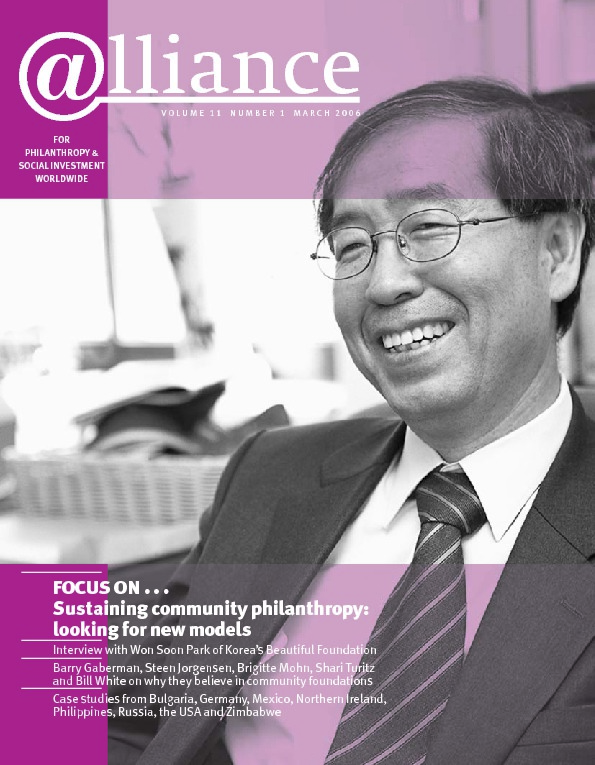As part of the growing interest in community philanthropy, development agencies are becoming more concerned to understand and scale up traditional forms of giving – beginning to put into practice the principle of ‘starting with where people are’. In 2005, Allavida funded research into the ‘fiii satului’ (sons of the village) associations in Romania. Fiii satului are people who have a strong feeling of identity with their community and are willing and able to contribute to its development.
The project was the result of a very positive experience Allavida had with Association of Sons of the Village Francesti, a community development organization which had succeeded in mobilizing local resources for the development of the village. What was this phenomenon? Why did people invest in it? Could this be adapted and applied more widely?
In the spring of 2005, a mapping of fiii satului activity was conducted around the country and nine communities were chosen for in-depth interviews. This article will outline the main findings of the research and their implications for practice.
Fiii satului were basically defined as the golden generation – the new elite formed in the 1970s of young, promising, rural-born men and women who left their villages to study and reached top positions in state-owned industry, health services, public administration, military or academia. The old socialist system gave rural children the opportunity to attend university free and laid the foundations for many good and stable careers in nearby towns and capital cities. In addition to giving, the fiii satului phenomenon was seen as a means of displaying and transmitting community traditions. It created a strong sense of identity and responsibility, especially among those who had emigrated. After the revolution and with the return of land to the original owners, many fiii satului groups became more active in village life.
Vertical philanthropy
The research found that fiii satului giving is largely vertical, with elites giving to the poor. This creates two difficulties: as giving results from the giver’s initiative, the most important needs of the community may not be addressed. Also, recipients are not consulted or involved in the giving process. If fiii satului community-based organizations are to be created, therefore, special attention will need to be given to ensuring participation of the community more widely.
There were two other notable findings. First, giving is more likely if an informal relationship already exists and the process of giving is mediated by a local institution, be it a local authority or an NGO. Second, fiii satului giving is an individual matter and it is rare for givers to pool their donations to invest in a particular project. Clearly, there is a need to build up community-based organizations to mediate the process and also to encourage collaboration among fiii satului givers to invest in a project that is identified by the community as a priority. Following on from this, when projects are designed to attract such investments, there must be a participatory needs assessment process to ensure the maximum social benefits and results.
Often the motivation for giving is related to image and status. It is more about the need of the giver to be seen than about producing real change in the community. The investment is not strategic and constant, but rather an on-and-off event.
Areas of investment
Since fiii satului giving is an elite initiative, the areas of giving reflect the interests and contacts that givers have with the community. Typical areas for investment are the church, the cemetery, a village museum, the school, a public library, sport, leisure activities and fiii satului meetings (annual gatherings of fiii satului in the village to celebrate community traditions). Few of these are developmental – let alone transformational – in character.
Overall, the research has shown that though fiii satului giving is an important community asset, it is not strategically directed. In order to harness this asset for development, two principal things are needed: credible community organizations that enjoy the trust of both the community and fiii satului members, which can serve as intermediaries and attract giving to truly developmental projects; and a participatory means of identifying such projects.
Roxana Mirciu is Executive Director, Foundation PACT (Partnership for Community Action and Transformation). She can be contacted at roximir@ardc.ro
For a full copy of the research article, contact Emil Paslaru at emil@operationsresearch.ro or Jonathan Edwards at jonathane@allavida.org


Comments (0)